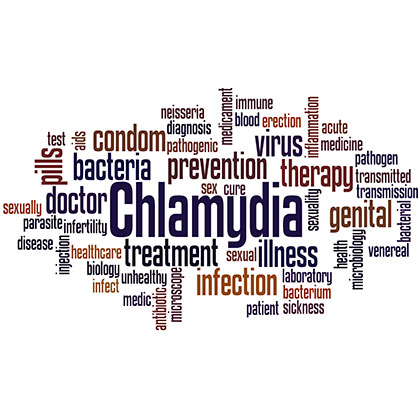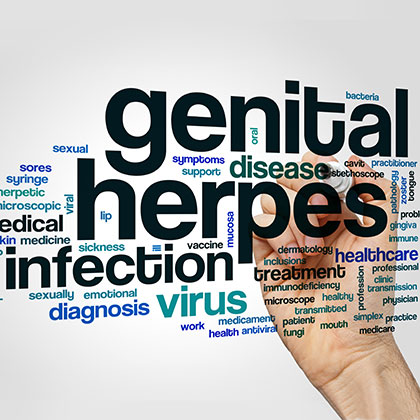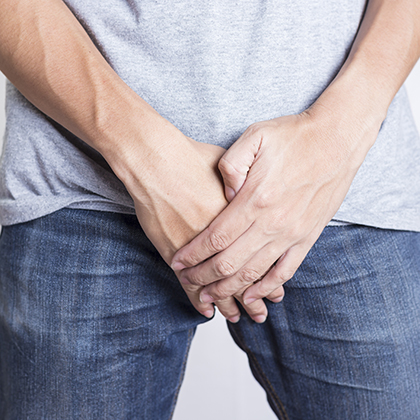
HIV stands for human immunodeficiency virus, which, as the name suggests, is a virus that affects the immune system. Passed from one person to another, HIV damages important immune system cells that protect against things like bacteria, viruses and other harmful substances. So once in your system, the virus makes it more difficult for your body to fight off everyday infections and disease.
The good news is the number of people being diagnosed with HIV in the UK is falling (i). In 2016 there were 5,164 new diagnoses of HIV in the UK, with the vast majority of infection acquired through sexual contact (i). According to the latest figures from sexual health and wellbeing charity Brook, around 100,000 people in the UK were living with HIV in 2017 (ii). However it’s estimated that there are around 10,000 people in the UK who don’t know they have HIV (i).
How does the virus operate?
HIV is a type of virus called a retrovirus. This type of virus integrates its DNA into the host cell’s DNA, which allows it to replicate itself. HIV attaches to and gets into cells called CD4 T cells, which are part of the immune system (CD4 T cells are lymphocytes, a type of white blood cell).
Once inside a CD4 T cell, the virus makes many copies of itself, which then break out of the CD4 T cell, killing the cell in the process. The new virus copies then attaches to and enters new CD4 T cells. Experts believe millions of new virus copies can be made in this way each day, with millions of CD4 T cells being killed a day too (i).
While white blood cells are involved in protecting the body against viruses, they cannot destroy HIV because the virus protects itself by constantly mutating. And while new CD4 T cells are still made every day in an attempt to fight HIV, the virus usually emerges as the stronger of the two eventually. This means that the number of CD4 T cells will at some point start to fall, weakening the immune system more and more.
Is HIV the same as AIDS?
HIV isn’t the same thing as AIDS. Short for acquired immunodeficiency syndrome, AIDS is the name for a range of infections and illnesses that can develop when your immune system has been damaged severely by HIV. These days, the term late-stage HIV is more commonly used than AIDS.
Thanks to modern treatments very few people with the virus go on to develop late-stage HIV. In fact, with early diagnosis and treatment most people with HIV can expect to have a long and healthy life. According to a report in the medical journal Lancet HIV, a 20-year-old person with HIV today could expect to live to 78 (iii).
Symptoms of HIV
HIV symptoms don’t usually show up for several years because it takes time for the virus to replicate to the extent that it can weaken the immune system. However, most people develop flu-like symptoms for a week or two soon after being infected (within two to six weeks, says the NHS (iv)). This is known as the primary infection or seroconversion illness.
The primary infection can include symptoms such as a high temperature, sore throat, rash, headache, tiredness and general aches and pains. Some people may also experience nausea, diarrhoea and swollen glands during this time.
The primary infection usually lasts a couple of weeks, but after that you may not have any other signs or symptoms for years. And that means you could be infected with HIV without realising it.
If you do start getting symptoms, they could include the following:
-
Swollen lymph glands
-
Night sweats
-
Persistent mouth ulcers
-
Herpes or shingles infections
-
Weight loss
-
Skin problems
-
Other recurrent infections.
If you go on to develop late-stage HIV, your CD4 T cell count becomes very low (around 200 cells per cubic metre of blood). This can make you far more susceptible to more serious infections, and you will also have an increased risk of developing other conditions such as certain cancers, HIV encephalopathy (also called AIDS dementia) and a body wasting syndrome.
However, the earlier you’re diagnosed with HIV the sooner you can start treatment, which can stop the damage to your immune system and prevent any related symptoms.
How is HIV spread?
HIV is found in body fluids including semen, vaginal and anal fluids, blood and breast milk. There are several ways the virus can get into your system, though the most common is by having unprotected vaginal or anal sex (according to Patient, nine out of 10 new HIV cases were transmitted this way in 2016(i)).
Other ways the virus can be spread include:
-
By sharing sex toys
-
Sharing needles
-
Oral sex (though the risk is much lower compared with vaginal or anal sex)
-
Having an infected blood transfusion (this is rare in the UK)
There is also a risk that HIV can be passed from a HIV-positive mother to her unborn child or to her baby through breastfeeding. These days, however, all pregnant women in the UK are offered a blood test to check for HIV as part of their antenatal screening. And thanks to modern drug treatments, the majority of babies with HIV-positive mothers aren’t born with the virus.
Preventing HIV
Because the virus is very good at mutating and changing itself, developing a vaccine against HIV has so far been unsuccessful. This means avoiding the infection is a case of steering clear of activities that put you at risk.
Having unprotected sex is a good example – you can avoid this by always using condoms, as these are the most effective way to protect yourself against HIV, as well as other sexually transmitted infections (STIs).
Always use condoms before any sexual contact takes place, as HIV can be passed on before ejaculation. Using a lubricant can also reduce your risk of getting HIV, as helps prevent condoms from tearing (only use water-based lubricants, as oil-based lubricants can weaken latex condoms).
However, you should try to avoid using spermicidally lubricated condoms, as according to the sexual health charity fpa these often contain a chemical that may increase the risk of HIV (v).
Also avoid sharing sex toys, or if that’s not possible, wash them thoroughly and cover them with a condom before each time you use them. It’s important not to share needles or any other injecting equipment too – if you inject drugs, ask your GP or drug counsellor about needle exchange programmes, where you can swap used needles for clean ones.
Meanwhile, if you’re at a high risk of HIV infection – if you have a partner who’s HIV positive, for example – you may be able to get medication called pre-exposure prophylaxis (PrEP) medication, which can help reduce your risk of getting the virus. PrEP medication is available on the NHS in England from sexual health clinics, as well as in Scotland, Northern Ireland and Wales, as well as privately.
HIV tests and treatment
Since the symptoms of HIV can take years to appear, it’s important to have a HIV test as soon as you think you could have the virus, even if you’ve been tested before. Not getting the test and treatment as early as possible lets the virus affect your immune system, and it could also increase your risk of passing the virus to someone else.
Some groups that are thought to be at particularly high risk are also advised to have tests on a regular basis. These include:
-
Men who have sex with men (yearly tests are recommended, or three-monthly tests for those having unprotected sex with new or casual partners).
-
Black African men and women who are having unprotected sex with new or casual partners.
-
People who share needles, syringes or other injecting equipment.
The HIV test checks for antibodies (immune system substances that fight infection) and antigens (parts of a virus) that, if found, confirm HIV infection. You may not be able to have a test immediately if you think you’ve just been infected, as it can take time for there to be enough HIV antibodies or antigens in your blood.
However, if you’ve very recently had unprotected sex with someone who’s HIV positive and not taking treatment or someone who has a high chance of having HIV, you could get a treatment called post-exposure prophylaxis (PEP) if you can take it within three days of being exposed to the virus. PEP helps prevent HIV infection, and is available at sexual health or GUM clinics, as well as at hospital A&E departments.
Where can you get tested?
You can get a HIV test at a sexual health or genitourinary medicine (GUM) clinic, at some contraception clinics and also at some young people’s services (click here to find sexual health services near where you live). HIV test kits are also available that you can use yourself at home – these are sold online and at pharmacies, but check they have a CE mark before you buy, as poor-quality kits aren’t reliable.
Home testing kits also aren’t as sensitive as clinic tests, so you may have to wait 12 weeks or longer before using one (clinic tests can usually be carried out about a month after infection).
How long you have to wait for your result will depend on the type of test you use. If you have a test at a clinic or other service, you should get your result within a week or sooner. Some clinics also do tests that can give results within just a few minutes. Home test kits, meanwhile, usually give you a result in around 15 minutes.
What if your test is positive?
No test is 100 per cent accurate, so if your HIV test comes back positive you’ll have to take another test to confirm the result. If the second test shows you have HIV, you’ll be offered treatment straight away by a HIV clinic. Since there’s no cure for HIV right now, the treatment you’ll be offered will help keep the virus at as low a level as possible in your blood. You will, however, have to take it for the rest of your life.
These treatments are called antiretroviral medicines, and they work by making it harder for the virus to replicate. There are many different types of antiretroviral medicines available, with most people taking three or more types at the same time – sometimes contained in one tablet – as this has been found to be more effective than taking just one or two types. Taking three or more antiretroviral medicines at the same time is also thought to reduce the risk of the virus becoming resistant to a single medicine.
The aim of the antiretroviral medicines is to reduce the virus to such a low level that it can’t be detected in your blood, known as an undetectable viral load – according to the Terrence Higgins Trust, it can take up to six months for some people to become undetectable from when they start treatment for HIV (vi).
This means you should stay healthy and your risk of passing the infection on to others may also be reduced significantly. Indeed, many experts believe if the virus is undetectable, it’s also untransmittable, which has given rise to the U=U slogan in recent years (vi).
However, as with most medicines there are some recognised side-effects that may affect some people. The most common side-effects include nausea, vomiting and headache, though these tend to disappear after a few weeks.
Less common side-effects can include rashes, dry skin, hair loss, damage to the liver, kidney, pancreas or nerves, and high blood sugar levels, which can increase your risk of type 2 diabetes.
Natural support for HIV
If you’re being treated for HIV, you may also want to give your immune system a helping hand by taking certain natural supplements. It’s important to note that these are not stand-alone treatments for HIV, and should be taken only to supplement your antiretroviral medicines.
Vitamins B and C
Both of these vitamins support the normal functioning of the immune system. But despite the fact that they’re found in a wide range of everyday foods, many of us may be running short. To make sure you’re getting the level of the B and C vitamins your immune system needs, you may want to consider taking a high-quality B complex supplement as well as a high-quality vitamin C supplement. You can also get both nutrients in good levels in a quality multivitamin and mineral formulation.
Live bacteria
Experts believe live bacteria – also called ‘friendly’ bacteria – may help regulate and support the immune system (vii). These live bacteria are thought to help restore the natural balance of bacteria in your gut. Live bacteria are available in supplement form, but you could also add these foods and drinks to your diet, such as sauerkraut, live yoghurt, kefir and kombucha.
High-strength multivitamin and mineral
As well as having a healthy diet, taking a high-strength multivitamin and mineral supplement may help make sure your immune system is getting all the nutrients it needs to stay as strong and effective as possible, especially when dealing with infections. For the best results, a multivitamin and mineral supplement should include good levels of zinc, which is thought to be important for immune function (viii) as well as vitamin D (ix).
Elderberry juice
Another supplement that may be useful for immune health is elderberry extract as it contains powerful antioxidants called anthocyanins. There is also evidence to suggest black elderberry extract increases the body’s production of chemical messengers within the immune system called cytokines, suggesting it has an immune-supporting function (x).
PLEASE NOTE: Some HIV medicines can interact with other treatments, from prescription medicines to over-the-counter remedies and even some herbal preparations. These include some nasal sprays and inhalers, and herbal products that contain St John’s wort, as well as some recreational drugs.
Always check with your doctor or ask at your clinic before taking any other medicines, natural or otherwise, if you’re being treated for HIV.
HIV is a debilitating condition, but it is no longer the life-threatening disease it once was. The sooner you identify it, the sooner you can start treating it. For more information on other health conditions, visit our health library.
References:
-
Available online: https://patient.info/sexual-health/sexually-transmitted-infections-leaflet/hiv-and-aids
-
Available online: https://www.brook.org.uk/your-life/hiv/
-
The Antiretroviral Therapy Cohort Collaboration. Survival of HIV_positive patients starting antiretroviral therapy between 1996 and 2013: a collaborative analysis of cohort studies. The Lancet HIV. 2017 Aug 1;4(8):E349-E356. Available online: https://www.thelancet.com/journals/lanhiv/article/PIIS2352-3018(17)30066-8/fulltext?elsca1=tlpr
-
Available online: https://www.nhs.uk/conditions/hiv-and-aids/
-
Available online: https://www.fpa.org.uk/sites/default/files/condoms-external-and-internal-your-guide.pdf
-
Available online: https://www.tht.org.uk/hiv-and-sexual-health/about-hiv/viral-load-and-being-undetectable
-
Information from CDC’s Division of HIV/AIDS Prevention. Centers for Disease Control and Prevention. Available online: https://www.cdc.gov/hiv/library/dcl/dcl/092717.html
-
Yah, F., Polk, D.B.. Probiotics and immune health. Curr Opin Gastroenterol. (2011 Oct). ;27(6): 496–501. Available online: https://www.ncbi.nlm.nih.gov/pmc/articles/PMC4006993
Chiang, B.L., Sheih, Y.H., Wang, L.H., et al. Enhancing immunity by dietary consumption of a probiotic lactic acid bacterium (Bifidobacterium lactis HN019): optimization and definition of cellular immune responses. Eur J Clin Nutr. (2000). ;54:849-855. Available online: https://www.ncbi.nlm.nih.gov/pubmed/11114680
Aziz. N., Bonavida B., Activation of Natural Killer Cells by Probiotics. For Immunopathol Dis Therap. 2016;7(102):41-55. Available online: http://www.dl.begellhouse.com/journals/1a654bf03faf67ac,2451af3842dace87,4072614f2000aab7.html -
Chandra, R.K. Trace element regulation of immunity and infection. J Am Coll Nutr. (1985). ;4:5-16. Available online: https://link.springer.com/chapter/10.1007/978-4-431-68120-5_23
Fraker, P.J., Gershwin, M.E., Good, R.A., et al. Interrelationships between zinc and immune function. Fed Proc. (1986). ;45:1474-1479. Available online: https://pubmed.ncbi.nlm.nih.gov/3485544/ -
Aranow, C. Vitamin D and the Immune System. J Investig Med. (2011 Aug). 59(6):881-886. Available online: https://www.ncbi.nlm.nih.gov/pmc/articles/PMC3166406
-
Barak, V., Halerpin, T., Kalickman, I. (2015). The effect of Sambucol, a black elderberry-based, natural product, on the production of human cytokines: I. Inflammatory cytokines. Eur Cytokine Netw. (2001 Apr-Jun). ;12(2):290-6. Available online: https://www.ncbi.nlm.nih.gov/pubmed/11399518
Related Posts
Disclaimer: The information presented by Nature's Best is for informational purposes only. It is based on scientific studies (human, animal, or in vitro), clinical experience, or traditional usage as cited in each article. The results reported may not necessarily occur in all individuals. Self-treatment is not recommended for life-threatening conditions that require medical treatment under a doctor's care. For many of the conditions discussed, treatment with prescription or over the counter medication is also available. Consult your doctor, practitioner, and/or pharmacist for any health problem and before using any supplements or before making any changes in prescribed medications.

Christine
Christine Morgan has been a freelance health and wellbeing journalist for almost 20 years, having written for numerous publications including the Daily Mirror, S Magazine, Top Sante, Healthy, Woman & Home, Zest, Allergy, Healthy Times and Pregnancy & Birth; she has also edited several titles such as Women’ Health, Shine’s Real Health & Beauty and All About Health.
View More



